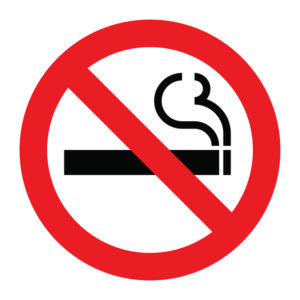Doctors’ Notes
BackSecond-Hand Smoke

Second-hand smoke is the involuntary exposure/inhalation of tobacco smoke by a non-smoker.
There are approximately 1 billion adult smokers worldwide, which suggests some second-hand smoke exposure is almost inevitable for children (and non-smoking adults). This is concerning, because smoking and smoke exposure can lead to many health consequences including cancer, heart disease, and chronic lung diseases.
Some of the Dangers and Potential Health Effects
• For babies whose mothers are exposed to second-hand smoke during pregnancy: birth defects, stillbirth, low birth weight, growth and developmental delay;
• Increased risk of sudden infant death syndrome (SIDS);
• Increased risk of bronchitis or pneumonia during first year of life;
• Increased risk of respiratory symptoms, including coughing, wheezing, mucous production, and development of asthma;
• Impaired growth and development of lung function during childhood;
• Increased risk of ear infections in children;
• Increased risk of cavities and tooth decay in children;
• Increased risk of certain childhood cancers, including leukemia, lymphoma, and brain tumors;
• Decreased kidney function.
Tips for Reducing Childhood Second-Hand Smoke Exposure
• Ban or severely restrict smoking in the home and all vehicles in which children ride;
• Restrict smoking to outside only;
• Quit smoking altogether — both to protect your child’s health and to set a good example so your child doesn’t smoke later in life;
• Refrain from taking children to restaurants or other public spaces that allow smoking; even if no one is actively smoking, the chemicals from smoking can be on surfaces for days.
Sara Weaver is a PA Student from Slippery Rock University who studied with us at Kids Plus.